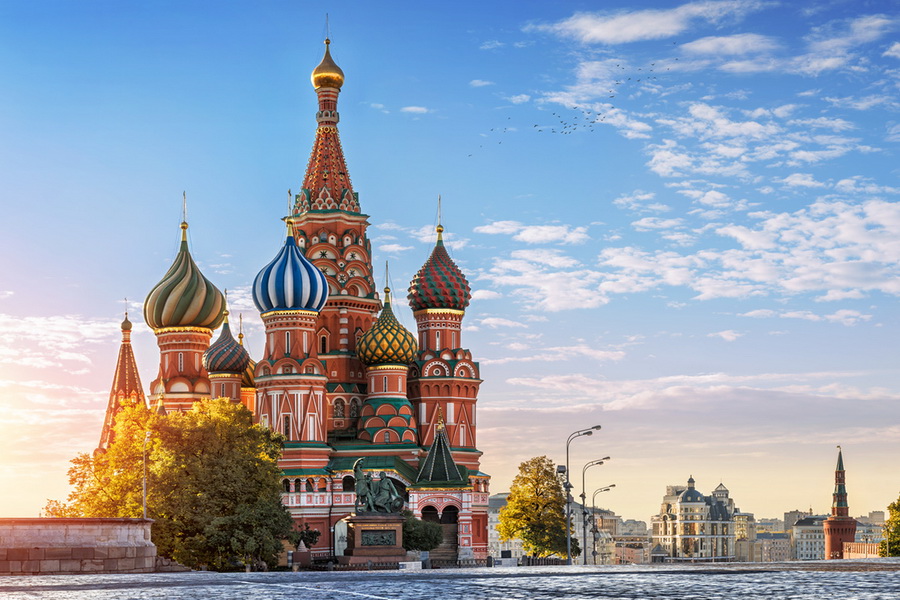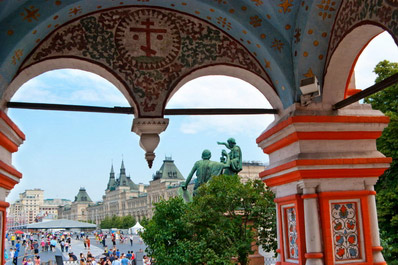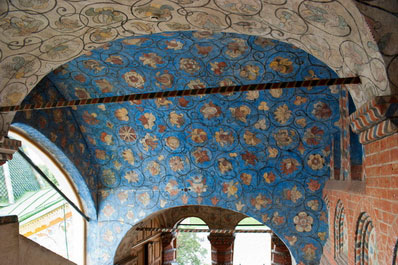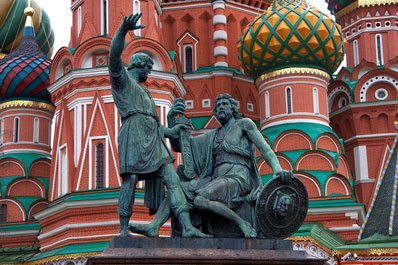
One of Russia’s most recognizable architectural masterpieces is Pokrovsky Cathedral, better known as St. Basil's Cathedral in Moscow. This Orthodox church, which has earned international recognition for its unique beauty, is located in the historical center of Russia’s capital. Its structural distinctiveness evokes endless admiration from guests and justifiable pride in Muscovites, who are honored to call this world masterpiece their own.
The cathedral was built from 1555-1561 by order of Tsar Ivan the Terrible, who vowed that he would build a church if the city of Kazan were captured from the Kazan Khanate. The people initially called the Cathedral Pokrov na Rvu (Moat Cover) as it was built next to a deep moat that ran along the eastern wall of the Moscow Kremlin.
In one of the cathedral’s chapels lies St. Basil the Blessed, the most revered holy fool in Russia from whom the church received its unofficial name. Legend has it that he collected money for the construction of Pokrovsky Cathedral and was known to throw coins over his right shoulder on Red Square in Moscow, which no one, not even the thieves, dared to touch. In August 1552, shortly before his death, St. Basil gave the collected money to Ivan the Terrible, who ordered a temple be built on the site.
Although the church was built by two Russian architects, Postnik and Barma, their identity only became known in 1895, when records were found in a historical manuscript collection of the 17th century. According to legend, Ivan the Terrible, upon seeing the construction of St. Basil’s Cathedral completed according to the architects’ design, was so delighted with its beauty that he ordered the architects be blinded so that they could never again build a temple equal in splendor to Pokrovsky Cathedral.
At St. Basil’s Cathedral, facts and legends have become enmeshed. According to another legend, Napoleon wished to move this architectural miracle to Paris. As the technology of the time was unable to cope with this task, the French emperor instead ordered his army to blow up the church, along with the Kremlin, before retreating. The Muscovites tried in vain to extinguish the lighted wicks, but providence intervened through a sudden torrential downpour, which helped to dowse the fire and save the church from destruction.
St. Basil's Cathedral is a symmetrical ensemble of eight colorful, pillar-shaped churches surrounding the ninth and highest chapel, which is crowned with a pergola. Each of the eight churches is named after a saint on whose holy day a significant event of Ivan the Terrible's Kazan campaigns took place. The central church is dedicated to the Feast of the Intercession of the Mother of God, for it was on this day that Kazan was stormed. The multihued churches are crowned with bulbous domes, each of which is unique in its architectural design. Each dome is further decorated with cornices, arched semi-circles, windows and niches.
St. Basil Cathedral’s interior is equally impressive. In the 1920s, it received the status of a museum, and since 1934 has been listed as a branch of the State Historical Museum. The cathedral-museum has nine iconostases, which contain about 400 icons of the 16th-19th centuries and represent the best examples of Novgorod and Moscow iconography. In addition to icons, the cathedral holds portrait and landscape paintings, church utensils, various weapons from the reign of Ivan the Terrible and an interesting collection of bells cast in Russia, Belarus, Holland, France and Germany. Among the most valuable exhibits is a 17th-century chalice (a liturgical vessel for consecrating wine) that belonged to Tsar Alexey Mikhailovich. The colors and detail of the frescoes splayed across the churches’ interior likewise leave many visitors speechless.
St. Basil’s Cathedral in Moscow attracts millions of tourists each year and has been counted among Russia’s UNESCO World Heritage Sites since 1990.




